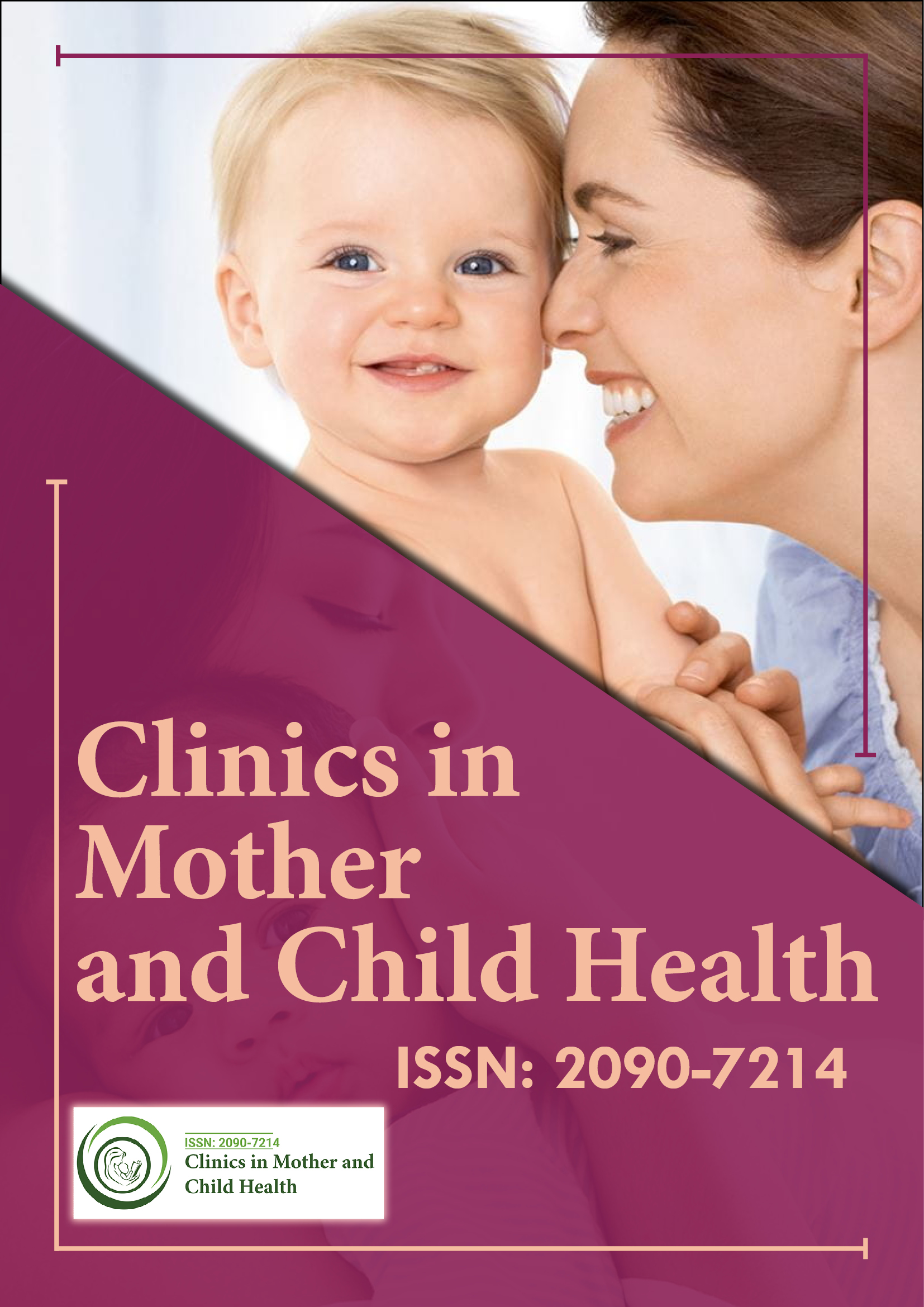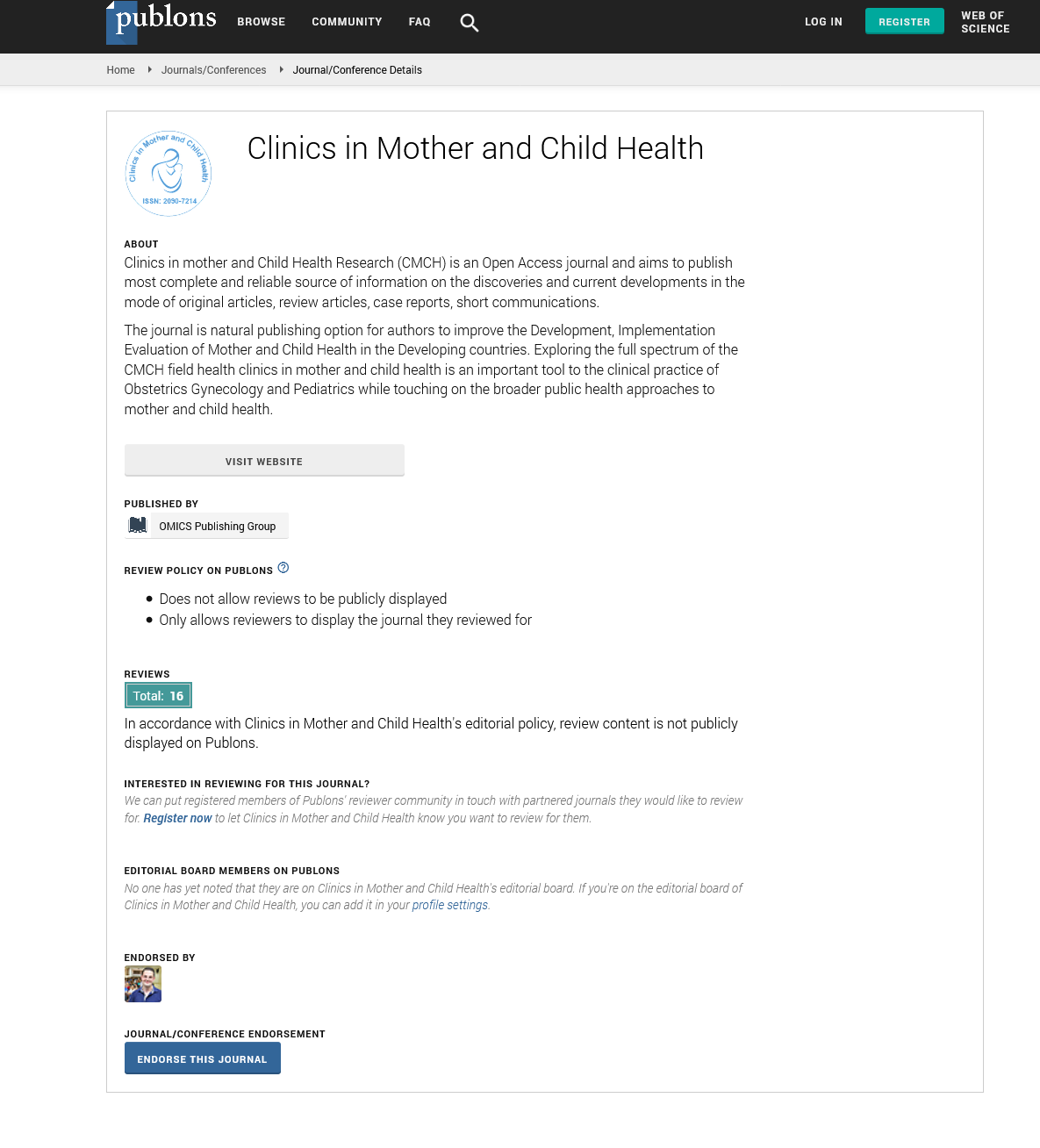Indexed In
- Genamics JournalSeek
- RefSeek
- Hamdard University
- EBSCO A-Z
- Publons
- Geneva Foundation for Medical Education and Research
- Euro Pub
- Google Scholar
Useful Links
Share This Page
Journal Flyer

Open Access Journals
- Agri and Aquaculture
- Biochemistry
- Bioinformatics & Systems Biology
- Business & Management
- Chemistry
- Clinical Sciences
- Engineering
- Food & Nutrition
- General Science
- Genetics & Molecular Biology
- Immunology & Microbiology
- Medical Sciences
- Neuroscience & Psychology
- Nursing & Health Care
- Pharmaceutical Sciences
Perspective - (2025) Volume 22, Issue 2
Prevalence and Determinants of Exclusive Breastfeeding Practices Among Working Mothers: A Cross-Sectional Analysis
Agata Kowalski*Received: 27-Jan-2025, Manuscript No. CMCH-25-28683; Editor assigned: 29-Jan-2025, Pre QC No. CMCH-25-28683; Reviewed: 12-Feb-2025, QC No. CMCH-25-28683; Revised: 18-Feb-2025, Manuscript No. CMCH-25-28683; Published: 26-Feb-2025, DOI: 10.35248/2090-7214.25.22.512
Description
Exclusive Breast Feeding (EBF) during the first six months of life is a vital practice that significantly contributes to infant survival, growth and development. It offers optimal nutrition, strengthens the immune system and promotes mother-child bonding. Despite global awareness campaigns and policy-level endorsements by health authorities, EBF rates remain suboptimal in many regions, especially among working mothers who face unique challenges in balancing employment responsibilities with infant feeding needs. This cross-sectional study aims to explore the prevalence of exclusive breastfeeding practices among employed women and to identify the key sociodemographic, occupational and psychosocial determinants that influence adherence to recommended breastfeeding guidelines.
The study was conducted in a metropolitan city, encompassing a sample of 1,000 working mothers who had infants aged between six and twelve months. Participants were recruited from various sectors, including healthcare, education, government services, retail and informal work environments. A structured questionnaire was used to collect data on demographic characteristics, employment details, breastfeeding practices, workplace policies, support systems, knowledge of breastfeeding benefits and barriers to exclusive breastfeeding. The data collection process was complemented by in-depth interviews with a subset of participants to capture nuanced insights into personal experiences and workplace influences.
Analysis of the data revealed that only 42% of the participating mothers practiced exclusive breastfeeding for the recommended sixmonth duration. A significant portion (58%) introduced supplementary feeding before six months, primarily due to returning to work, lack of time, or insufficient workplace support. The study identified multiple determinants that had a strong association with exclusive breastfeeding practices. Key among them were the length of maternity leave, flexibility of working hours, access to lactation breaks, presence of breastfeeding facilities at the workplace, maternal education level and awareness of breastfeeding benefits.
Mothers who had access to paid maternity leave of at least three months, combined with flexible work schedules, were significantly more likely to continue exclusive breastfeeding. Among participants who received six months of maternity leave, the prevalence of EBF was as high as 68%, compared to only 27% among those who returned to work within six to eight weeks postpartum. Similarly, women employed in organizations that provided breastfeeding rooms, refrigeration facilities for expressed milk, or formal lactation break policies were more inclined to sustain breastfeeding. In contrast, mothers working in informal sectors or without formal employment benefits faced structural barriers that severely impacted their ability to breastfeed exclusively.
Education level also played a considerable role. Mothers with higher educational attainment were more informed about the benefits of EBF and often more proactive in seeking solutions to breastfeeding challenges, such as using breast pumps or negotiating modified work arrangements. However, even highly educated women expressed frustration at workplace cultures that subtly discouraged breastfeeding or placed career advancement over maternal health needs. A recurring theme in the interviews was the sense of guilt and emotional stress experienced by mothers who had to discontinue exclusive breastfeeding earlier than intended due to job constraints.
The study also examined the role of spousal and familial support in sustaining EBF practices. Women who reported strong emotional and logistical support from their partners and families were more likely to continue exclusive breastfeeding, as shared responsibilities at home allowed them to manage both infant care and professional duties more effectively. On the contrary, lack of support and societal pressure to prioritize work over breastfeeding were cited as common reasons for early cessation. Psychosocial factors, including maternal confidence, perceived milk insufficiency and anxiety about job security, also emerged as important predictors. Many mothers reported doubts about their ability to produce enough milk once they resumed work, leading to premature supplementation. In several cases, fear of employer disapproval or job loss resulted in mothers not utilizing available lactation breaks, thereby undermining consistent breastfeeding efforts.
Despite global recommendations and increasing advocacy for breastfeeding-friendly workplaces, this study highlights the gap between policy and practice. While some organizations have taken steps toward accommodating breastfeeding mothers, many workplaces still lack the structural and cultural support necessary for sustained EBF. The findings underscore the importance of enforcing labor policies that mandate adequate maternity leave, provide lactation accommodations and protect the rights of breastfeeding employees.
The study illustrates that exclusive breastfeeding among working mothers is influenced by a complex interplay of individual, organizational and societal factors. The low prevalence of EBF in this population underscores the urgent need for integrated strategies that involve employers, policymakers, healthcare providers and families. Creating enabling environments that support working mothers through flexible work arrangements, breastfeeding facilities, education and social support can significantly enhance adherence to exclusive breastfeeding recommendations and, consequently, improve maternal and child health outcomes.
Citation: Kowalski A (2025). Prevalence and Determinants of Exclusive Breastfeeding Practices Among Working Mothers: A Cross-Sectional Analysis. Clinics Mother Child Health. 22:512.
Copyright: © 2025 Kowalski A. This is an open-access article distributed under the terms of the Creative Commons Attribution License, which permits unrestricted use, distribution and reproduction in any medium, provided the original author and source are credited.

